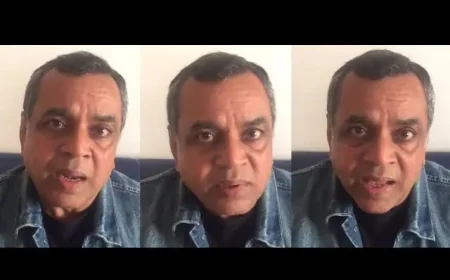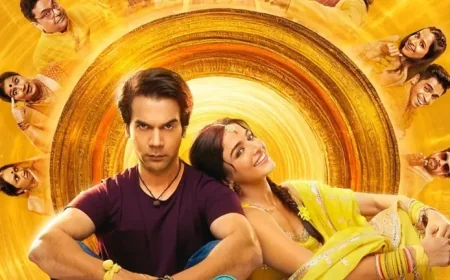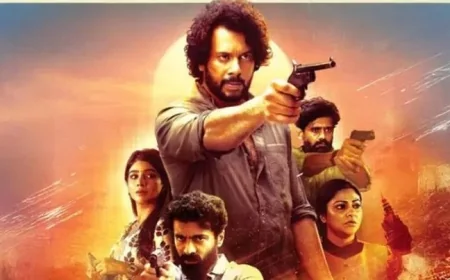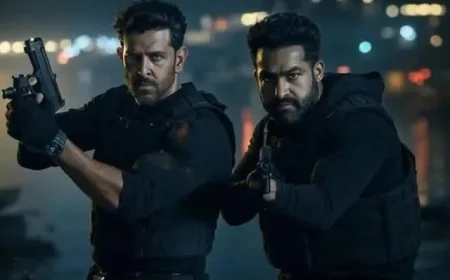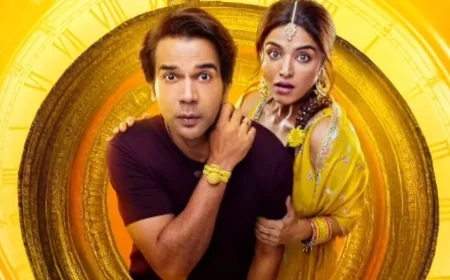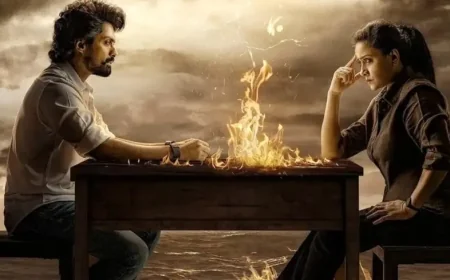Sikandar: A Disappointing Comeback for Salman Khan
An in-depth review of Salman Khan's latest film Sikandar, examining its flaws in storytelling, direction and acting. Despite high expectations, the movie fails to deliver a compelling plot or memorable performances.
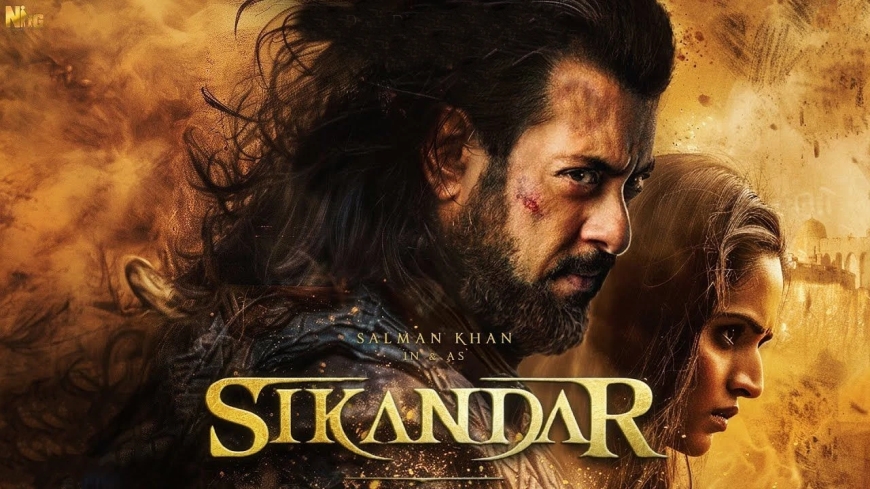
Sikandar: High Expectations Meet Harsh Reality
Salman Khan's highly anticipated return to the big screen after a two-year hiatus has left fans and critics alike feeling let down. The film "Sikandar", which promised to be a grand spectacle showcasing Khan's star power, instead serves as a cautionary tale about the perils of prioritizing star worship over solid filmmaking.
A Promising Start That Quickly Fizzles
The movie opens with an impressive introduction sequence featuring Salman Khan's character on an airplane. The action choreography and background score initially create excitement, hinting at an adrenaline-pumping experience ahead. However, this promising start proves to be deceptive, as the film rapidly loses steam and coherence.
Key Issues:
- Lack of a compelling antagonist
- Disjointed storytelling
- Poor editing choices
- Misuse of talented supporting cast
Plot and Character Development: Missing in Action
One of Sikandar's most glaring flaws is its paper-thin plot and underdeveloped characters. The titular character, played by Salman Khan, is introduced as "Raja Sahab" - a figure revered as a godlike entity by some, while simultaneously having 49 police cases against him. This intriguing premise is never satisfactorily explored or explained.
The film attempts to weave together multiple storylines involving love, revenge, and family drama. However, the execution is so haphazard that viewers are left struggling to connect the dots or invest emotionally in any of the characters' journeys.
Salman Khan: Coasting on Star Power
Salman Khan's performance in Sikandar is emblematic of the larger issues plaguing the film. While his screen presence remains undeniable, the actor seems to be going through the motions rather than fully inhabiting his character.
Notable Issues with Khan's Performance:
- Stilted dialogue delivery
- Lack of chemistry with co-star Rashmika Mandanna
- Over-reliance on slow-motion shots and dramatic poses
The film's attempts to portray Khan's character as a larger-than-life, messianic figure often come across as forced and disconnected from the actual plot. This approach may appeal to die-hard fans but does little to elevate the overall quality of the movie.
Supporting Cast: Wasted Potential
Sikandar boasts a talented supporting cast, including actors like Jagapathi Babu and Prateik Babbar. Unfortunately, the film fails to utilize their skills effectively. Characters are introduced with much fanfare only to disappear for long stretches or be relegated to inconsequential roles.
Rashmika Mandanna, in particular, suffers from an underwritten role that gives her little opportunity to showcase her acting abilities. Her character's romance with Salman Khan's protagonist feels forced and lacks the chemistry necessary to make it believable.
Direction and Technical Aspects: A Mixed Bag
Director AR Murugadoss, known for his work on films like "Ghajini", struggles to bring cohesion to Sikandar's scattered narrative. While there are moments of visual flair, particularly in the action sequences, they are not enough to compensate for the overall lack of storytelling finesse.
Positive Technical Elements:
- Well-choreographed action scenes
- Vibrant cinematography
- Decent background score
Negative Technical Aspects:
- Choppy editing
- Inconsistent pacing
- Poorly integrated song sequences
The Editing Conundrum
One of the most criticized aspects of Sikandar is its editing. The film suffers from abrupt scene transitions and a lack of flow between sequences. This choppy approach not only disrupts the narrative but also makes it challenging for viewers to remain engaged with the story.
Many scenes feel incomplete or rushed, suggesting that significant portions of the film may have been left on the cutting room floor. This raises questions about whether a longer, more coherent version of the movie exists and if studio interference played a role in the final cut.
Music and Song Placements: Missed Opportunities
While the film's soundtrack isn't inherently bad, the placement and execution of song sequences leave much to be desired. Musical numbers often appear out of nowhere, disrupting the flow of the narrative rather than enhancing it.
The title track "Sikandar", which plays during Salman Khan's introduction, is arguably the most effective use of music in the film. However, subsequent songs fail to recapture that energy or serve a meaningful purpose in advancing the plot.
Action Sequences: A Silver Lining
If there's one area where Sikandar partially delivers, it's in its action set pieces. The film's stunt choreography, particularly in scenes featuring Salman Khan, demonstrates a level of creativity and execution that stands out from the rest of the production.
The use of color and stylized cinematography in these sequences provides some visually engaging moments. However, without a strong narrative foundation or clear stakes for the characters, even these well-crafted action scenes struggle to create lasting impact.
Thematic Inconsistencies and Forced Messaging
Sikandar attempts to incorporate social messages and themes into its narrative, but these efforts often feel heavy-handed and disconnected from the main plot. The film's treatment of topics like corruption and social inequality lacks nuance, coming across as superficial attempts to add depth to an otherwise shallow story.
Moreover, the movie's portrayal of Salman Khan's character as a quasi-divine figure blurs the line between celebrating a screen idol and promoting unhealthy hero worship. This approach not only undermines any serious themes the film might be trying to explore but also does a disservice to Salman Khan as an actor.
The Villain Problem: Where's the Conflict?
A critical weakness in Sikandar's narrative is the absence of a compelling antagonist. The film introduces several characters who could potentially serve as formidable opponents to Salman Khan's protagonist, but none are developed sufficiently to create genuine tension or conflict.
This lack of a strong opposing force robs the story of stakes and makes the hero's journey feel inconsequential. Without a clear threat or challenge to overcome, the protagonist's actions and motivations become increasingly difficult for the audience to understand or support.
Pacing Issues: A Test of Patience
Sikandar's pacing is wildly inconsistent, alternating between frenetic action sequences and drawn-out dialogue scenes that bring the narrative to a standstill. This uneven rhythm makes the film's runtime feel much longer than its actual duration, testing the patience of even the most devoted Salman Khan fans.
The sluggish pacing is particularly noticeable in the film's second half, where the plot meanders without a clear direction. By the time the climax arrives, many viewers may find themselves more relieved than excited.
Missed Opportunities for Character Development
Despite its lengthy runtime, Sikandar fails to provide meaningful character development for its protagonist or supporting cast. Salman Khan's character remains largely one-dimensional throughout the film, with little exploration of his motivations or inner conflicts.
Similarly, potentially interesting side characters are introduced but never fully fleshed out. This lack of depth makes it difficult for the audience to form emotional connections with anyone on screen, further diminishing the impact of the film's dramatic moments.
The Climax: An Anticlimactic Conclusion
Perhaps the most disappointing aspect of Sikandar is its underwhelming climax. After building up expectations throughout its runtime, the film's conclusion feels rushed and unsatisfying. Plot threads are hastily tied up (or left dangling), and the final confrontation lacks the epic scale promised by the movie's marketing.
The absence of a proper resolution to many of the story's conflicts leaves viewers with a sense of incompleteness. This failure to deliver a satisfying ending compounds the frustrations built up over the course of the film.
Visual Effects: Inconsistent Quality
While Sikandar boasts some impressive practical stunts and action choreography, its use of visual effects is less consistent. Some CGI-heavy sequences stand out as obviously artificial, breaking the audience's immersion in crucial moments.
This inconsistency in visual quality is particularly noticeable in wide shots and large-scale action scenes. The contrast between these moments and the more grounded, practical effects work serves to highlight the film's uneven production values.
Dialogue: Missed Opportunities for Memorable Lines
For a film starring Salman Khan, known for delivering iconic dialogues that resonate with fans, Sikandar's script is surprisingly forgettable. Many of the protagonist's lines feel forced or unnatural, lacking the punch and charisma typically associated with Khan's performances.
This weakness in dialogue writing extends to the entire cast, with conversations often feeling stilted or expository rather than organic and character-driven. The absence of quotable lines or powerful exchanges further diminishes the film's lasting impact.
Cultural Context: Failing to Resonate
Sikandar seems out of touch with the evolving tastes of Indian cinema audiences. While there's still a market for larger-than-life hero-driven narratives, viewers increasingly expect these stories to be backed by solid writing and contemporary themes.
The film's old-fashioned approach to storytelling and character development feels anachronistic in today's landscape of Indian cinema, where even mainstream commercial films are pushing boundaries and exploring new narrative territories.
Box Office Implications: A Wake-Up Call
The lukewarm reception to Sikandar could have significant implications for Salman Khan's career and the broader trend of star-driven vehicles in Bollywood. While Khan's fan base remains substantial, the film's shortcomings suggest that audience loyalty has its limits.
This performance may prompt a reevaluation of the "star power" formula in Indian cinema, potentially leading to more emphasis on script development and overall film quality rather than relying solely on an actor's popularity.
Lessons for Future Projects
Sikandar serves as a cautionary tale for filmmakers and stars alike. Its failures highlight the importance of:
- Prioritizing strong, coherent storytelling
- Developing well-rounded characters beyond the protagonist
- Ensuring technical excellence across all aspects of production
- Balancing star power with substantive content
- Staying attuned to evolving audience expectations
Conclusion: A Disappointing Misfire
Ultimately, Sikandar represents a significant missed opportunity. With its talented cast, big budget, and the star power of Salman Khan, the film had the potential to be a memorable addition to Indian cinema. Instead, it serves as a reminder that even the biggest names in the industry are not immune to the consequences of poor filmmaking choices.
For Salman Khan fans, Sikandar may still offer some moments of enjoyment through the actor's screen presence and action sequences. However, for general audiences and critics, the film is likely to be remembered as a disappointing entry in Khan's filmography.
As the Indian film industry continues to evolve and produce increasingly sophisticated and diverse content, movies like Sikandar highlight the need for even established stars to prioritize quality storytelling and filmmaking craft. Only by meeting these higher standards can actors like Salman Khan hope to maintain their position at the forefront of Indian cinema in the years to come.
Image Credit: Instagram
What's Your Reaction?
 Like
0
Like
0
 Dislike
0
Dislike
0
 Love
0
Love
0
 Funny
0
Funny
0
 Angry
0
Angry
0
 Sad
0
Sad
0
 Wow
0
Wow
0



